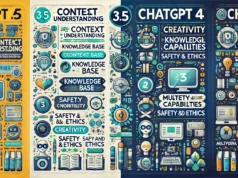How can language AI models like GPT-3 revolutionize the field of automated linguistic analysis?
The Linguistic Revolution: Exploring the Limitless Potential of Language AI Beyond GPT-3

Introduction: The Rise of GPT-3
Language AI has come a long way in recent years, with OpenAI’s GPT-3 (Generative Pre-trained Transformer 3)
making significant strides in natural language processing. GPT-3 has gained widespread attention due to its
ability to generate coherent and contextually relevant text, often indistinguishable from that written by a
human. However, the potential of language AI extends far beyond GPT-3, and researchers are only scratching the
surface of its immense possibilities.
Unleashing Creativity and Innovation
GPT-3 has demonstrated an astonishing capability to compose articles, write code, and even create original
pieces of art. Its powerful language modeling capabilities have amazed the world, pushing boundaries and
sparking innovation across multiple industries. However, we are only beginning to uncover the true extent of
what language AI can achieve.
With further advancements in language AI, we can envision a future where creativity is unleashed like never
before. From generating inventive designs for architecture and fashion to composing groundbreaking music and
literature, language AI has the potential to revolutionize various fields.
Enhancing Communication and Accessibility
Language AI holds immense promise for facilitating communication across language barriers. By providing
real-time translation and interpretation services, language AI can bridge the gap between different cultures
and foster global understanding.
Furthermore, language AI can enable people with disabilities to communicate more effectively. Through text-to-speech
and speech-to-text features, individuals with impaired hearing or speech can overcome communication barriers.
This inclusivity will play a vital role in creating a more accessible and equitable society.
Transforming Customer Service and Support
As language AI continues to advance, it has the potential to revolutionize customer service and support. AI-powered
chatbots can provide instant, accurate, and personalized responses to customer queries, enhancing customer
satisfaction. Natural language understanding and generation models can understand customer needs, detect emotions,
and tailor responses accordingly, creating a more human-like and empathetic interaction.
Applications in Healthcare and Research
Language AI can bring tremendous advancements to the healthcare field. By analyzing vast amounts of medical
literature and patient data, AI models can assist doctors in diagnosing diseases, suggesting treatment plans,
and predicting outcomes. This could lead to more accurate and efficient healthcare practices, saving lives
and enhancing overall patient care.
Moreover, language AI can support scientific research by analyzing complex research papers, assisting in data
analysis, and even suggesting new research directions. The ability to comprehend and generate scientific content
can accelerate the pace of scientific discovery and enable collaboration across disciplines.
Conclusion: The Ever-Evolving Linguistic Revolution
GPT-3 has undoubtedly made a remarkable impact, showcasing the possibilities of language AI. However, this is
just the tip of the iceberg. The limitless potential of language AI lies in its ability to transform various
industries, foster communication, enhance accessibility, revolutionize customer service, and accelerate research.
As we continue to push the boundaries of what language AI can achieve, we enter an era of unprecedented
linguistic revolution.









